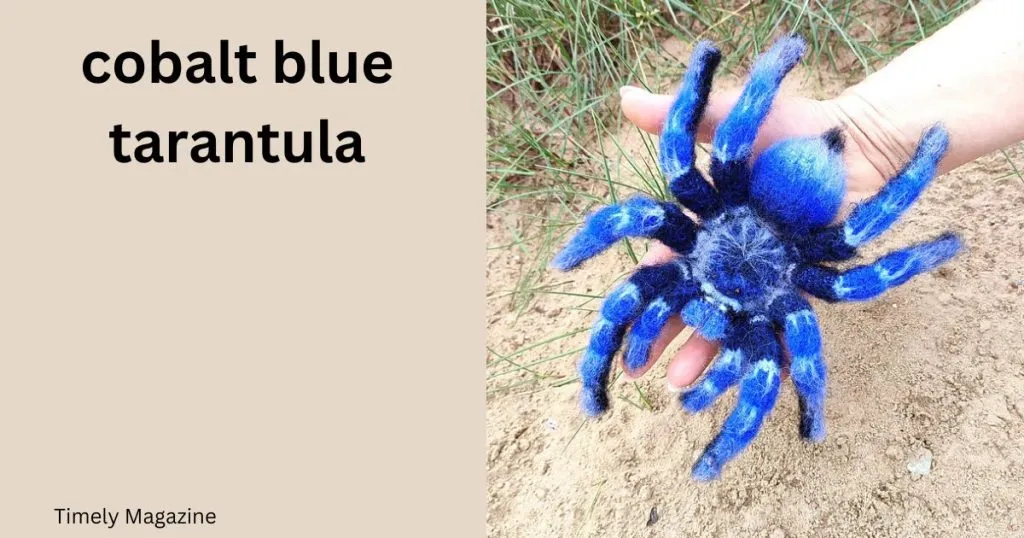The vibrant cobalt blue tarantula, a captivating creature with its striking coloration, is a favorite among tarantula enthusiasts. While their beauty is undeniable, the question of whether to handle them often arises. Handling a cobalt blue tarantula is a decision that should be approached with caution and a deep understanding of the spider’s needs and behaviors. This article will explore the intricacies of handling these fascinating arachnids, offering guidance on safety, best practices, and essential considerations for both the spider and the handler. Proper handling can foster a stronger bond between you and your pet.
Why Handle a Cobalt Blue Tarantula?
The primary reasons for handling a cobalt blue tarantula often revolve around observation, enclosure maintenance, or health checks. Regular handling can allow you to observe the spider up close, monitor its overall health, and identify any potential issues. When it comes to enclosure maintenance, sometimes it is necessary to move the tarantula to clean the enclosure or replace substrate. However, it’s essential to weigh the benefits against the risks. Tarantulas are delicate creatures, and unnecessary handling can stress them. Moreover, their defensive behaviors, such as biting or kicking urticating hairs, pose potential hazards to the handler.
Understanding the Cobalt Blue Tarantula’s Temperament
Cobalt blue tarantulas are known for their defensive nature. They are not typically docile like some other tarantula species. Their temperament is often described as skittish and prone to fleeing or exhibiting defensive behaviors when they feel threatened. Their primary defense mechanisms include fleeing, kicking urticating hairs (which can cause skin irritation), and biting as a last resort. Understanding their temperament is crucial for safe handling. It is essential to be aware of their potential reactions and to approach them calmly and with respect. Patience and a gentle approach are key when interacting with these spiders. Be aware of their movement and body language at all times.
Identifying Signs of Stress in Your Tarantula
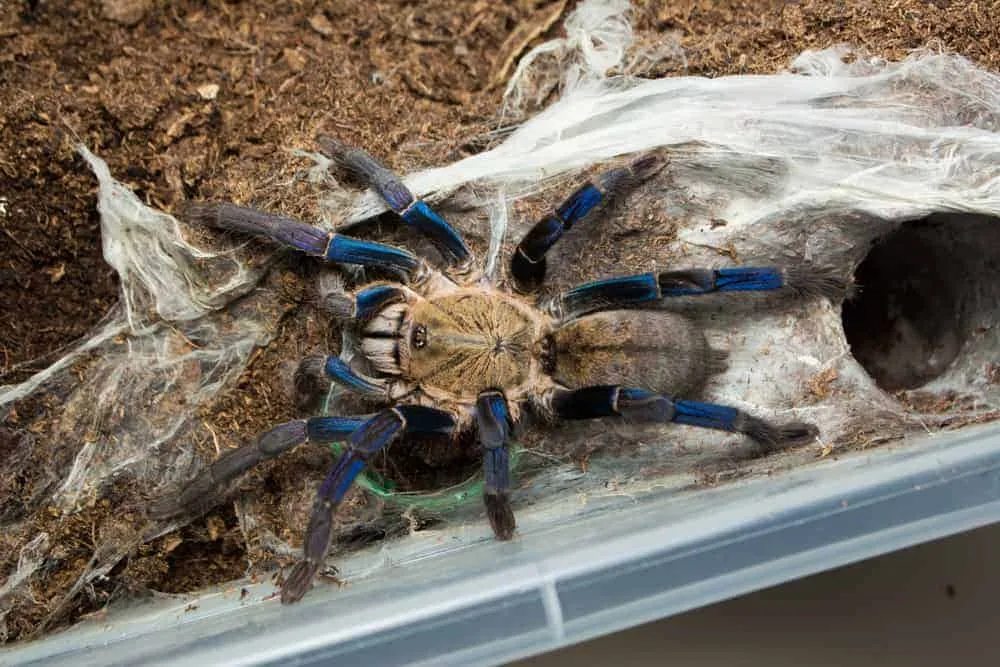
Before any handling, observe your cobalt blue tarantula for signs of stress. These signs can indicate that the spider is not in a suitable state for handling. Look for behaviors such as a raised threat posture (lifting the front legs and fangs), rapid movement, or excessive kicking of urticating hairs. If the tarantula appears agitated or stressed, it is best to avoid handling altogether. Other signs include erratic movements, a refusal to eat, or spending an excessive amount of time hiding. These behaviors indicate that the tarantula is uncomfortable or feels threatened. Always prioritize the well-being of your pet and avoid handling if they are exhibiting stress signals.
Preparing for Handling
Careful preparation is essential before attempting to handle a cobalt blue tarantula. Preparing the environment and the handler will significantly improve the chances of a safe and stress-free experience for both the spider and the handler. Ensure the environment is quiet, well-lit, and free of any potential hazards. Have a clear plan in place, and avoid distractions. This planning helps minimize stress for the tarantula and reduces the risk of accidents. If you are not confident, it is best to avoid handling altogether. The safety of the tarantula and the handler should always be the primary concern.
Choosing the Right Time
The ideal time to handle your cobalt blue tarantula is when they are calm, not in the process of molting, and not recently fed. Avoid handling shortly after a feeding, as this can make them more vulnerable. It is important to note that they can be unpredictable. It’s best to handle them when they are most likely to be relaxed, such as when they are exploring their enclosure or resting peacefully. Never handle a tarantula that is in premolt (preparing to shed its exoskeleton), as they are extremely vulnerable during this time. Also, avoid handling them directly after a meal, as they are more likely to be defensive then.
Creating a Safe Environment

Creating a safe environment is paramount. Choose a well-lit space where you can clearly see the tarantula’s movements. This will enable you to respond quickly if needed. Handle the tarantula over a soft surface, such as a bed or a low table covered with a blanket, to minimize the risk of injury if the spider falls. Keep a container nearby, such as a clear plastic tub, to gently guide the spider into if necessary. Ensure the area is free of any objects that could potentially harm the tarantula. Keeping other pets and children away during handling sessions is also important for a safe and stress-free experience. The environment should be conducive to a calm interaction.
Top 5 Tips for Handling Cobalt Blue Tarantulas
Tip 1 Handle Slowly and Gently
Approach the tarantula slowly and avoid sudden movements. This helps prevent startling the spider and triggering a defensive response. When handling, gently scoop the spider up, supporting its body with your hands. Avoid grabbing or squeezing the tarantula, as this can cause injury. Let the tarantula walk onto your hand. If it hesitates or appears nervous, wait patiently. The goal is to build trust and make the handling process as comfortable as possible for the spider. Be mindful of the tarantula’s movements and body language at all times.
Tip 2 Use a Soft Brush for Guidance
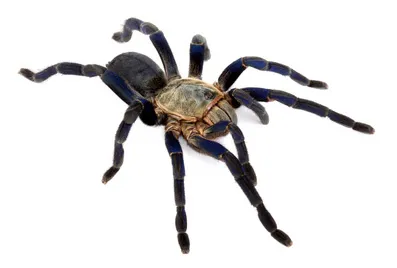
If the tarantula is hesitant to move or you need to guide it, use a soft, clean paintbrush or a similar tool to gently encourage it. Avoid touching the tarantula directly with your fingers unless necessary. Gently brush the spider in the direction you want it to go. This can help the tarantula feel more secure and in control of the situation. The brush provides a point of contact that is less threatening than a direct touch. Always use a soft brush. This technique can be helpful for guiding the tarantula into a container or back into its enclosure. Be patient and allow the spider to move at its own pace. (cobalt-blue-tarantula-brush.webp)
Tip 3 Avoid Sudden Movements
Sudden movements can startle a cobalt blue tarantula and trigger a defensive reaction. Move slowly and deliberately, avoiding any quick gestures or loud noises. Keep your movements smooth and predictable. Keep your movements slow, steady, and predictable to avoid startling the tarantula. Rapid movements can be perceived as a threat. If the tarantula appears stressed or agitated, gently place it back into its enclosure immediately. Constant vigilance is key to safe handling.
Tip 4 Handle Over a Soft Surface
Always handle the tarantula over a soft surface, such as a bed, a couch, or a table covered with a blanket. This will help to cushion the fall if the spider decides to make a quick escape. Even a small fall can be injurious to a tarantula, so this precaution is essential. A soft surface reduces the risk of injury and provides a more secure environment for handling. This also provides peace of mind. This safety measure is especially important considering the tarantula’s defensive tendencies and potential for sudden movements. (cobalt-blue-tarantula-handling-2.webp)
Tip 5 Never Handle if Molting or After Feeding
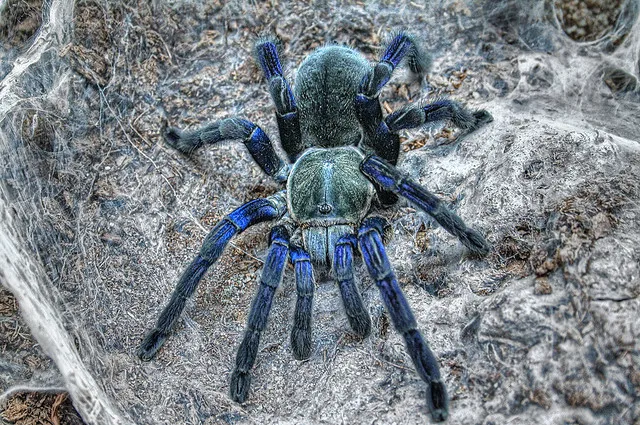
Avoid handling your cobalt blue tarantula if it is in premolt or shortly after feeding. During premolt, the tarantula’s exoskeleton is soft and fragile, making it extremely vulnerable to injury. Handling at this time can be fatal. After feeding, the tarantula is more likely to be defensive, and the process of digestion requires the least amount of stress possible. It is also best not to handle a tarantula for several days after it has molted, as its new exoskeleton will be quite soft. Respecting these periods is crucial for your tarantula’s health and safety. Never take unnecessary risks with your pet tarantula. (cobalt-blue-tarantula-molting.webp)
Post-Handling Care
After handling, carefully return the tarantula to its enclosure and allow it to settle. Wash your hands thoroughly with soap and water to remove any potential irritants from the tarantula’s urticating hairs. Monitor the tarantula for any unusual behavior or signs of stress. Provide fresh water and ensure that its enclosure is in optimal condition. This will assist your tarantula in its recovery. Providing a quiet and undisturbed environment will help your tarantula to relax after handling. After each handling session, observe your tarantula for any changes in behavior.
Cleaning and Inspecting the Enclosure
When handling, always take the opportunity to inspect the enclosure for any necessary maintenance. Replace any soiled substrate, remove uneaten food, and ensure the water dish is clean and full. Check the enclosure’s temperature and humidity levels to ensure they are within the recommended range. Check the overall enclosure for cleanliness. Regularly cleaning and maintaining the enclosure provides a healthy and comfortable environment for the tarantula. This also helps prevent the buildup of bacteria and parasites. (cobalt-blue-tarantula-enclosure.webp)
Recognizing Emergency Situations
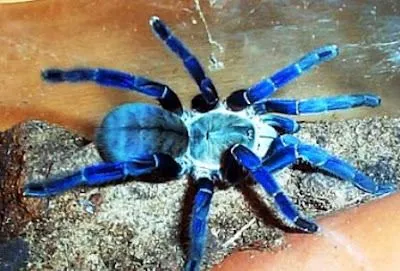
Be aware of potential emergency situations that may arise during handling, such as a tarantula falling, being injured, or exhibiting a bite. If the tarantula falls, carefully assess it for any injuries. If bitten, seek immediate medical attention, as tarantula bites can be painful and may cause allergic reactions. If there is injury, consult a veterinarian or experienced tarantula keeper for advice on how to proceed. Always handle with care. If you are unsure of your ability to handle such situations, consider getting advice from an experienced tarantula keeper or professional. The health and well-being of your tarantula should always be your top priority. (cobalt-blue-tarantula-handling-3.webp)
In conclusion, handling a cobalt blue tarantula demands a mindful approach. By understanding their temperament, preparing appropriately, and following safety guidelines, you can minimize risks and ensure the well-being of both the spider and yourself. Always remember that observation and respect for the tarantula’s needs are paramount. Careful handling will enhance the bond and enjoyment you experience as a tarantula owner. Always prioritize the safety of your pet and yourself. If in doubt, consult with an experienced tarantula keeper or a veterinarian who specializes in exotic animals.
